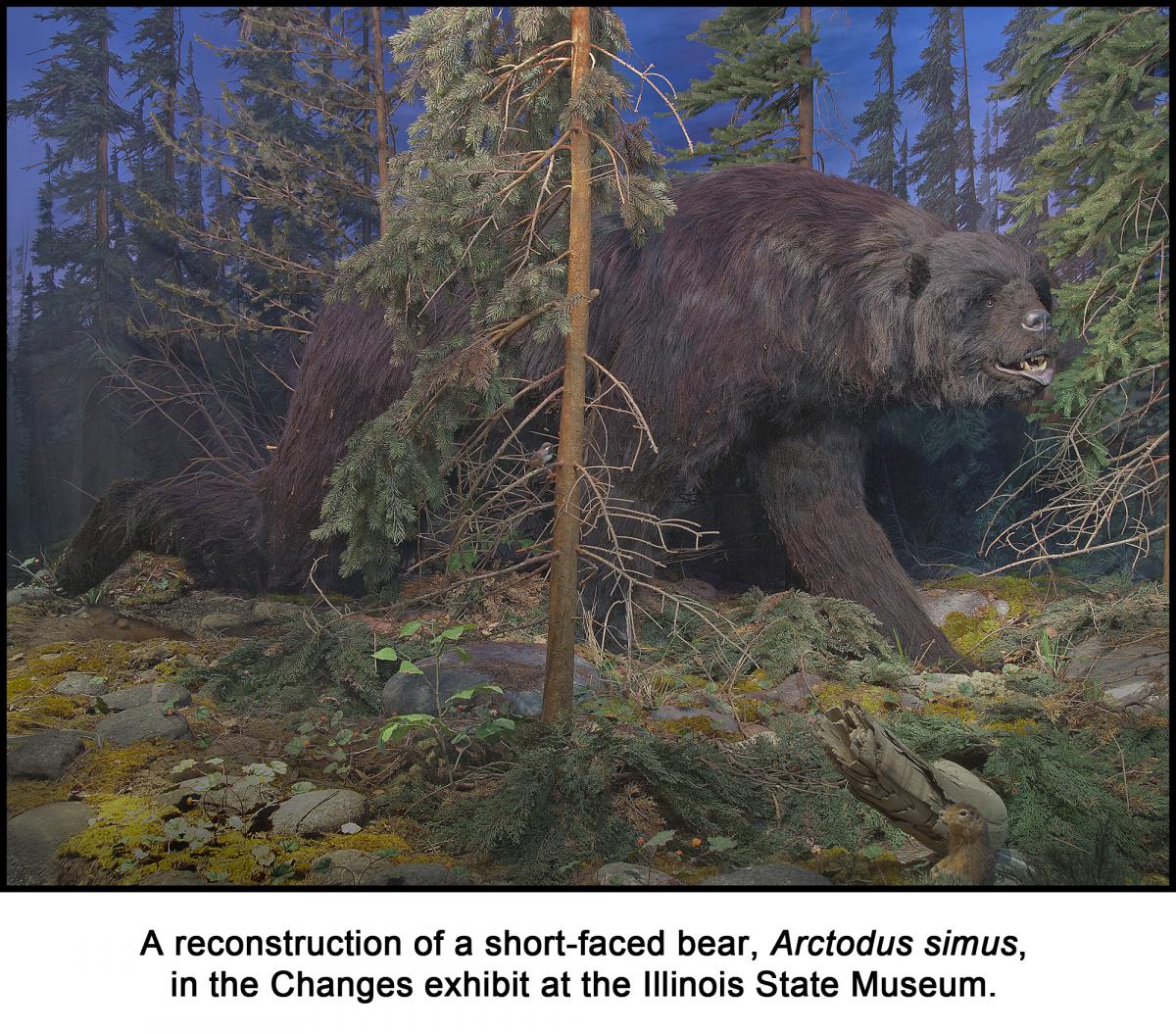
Shortfaced Bear Explore the Ice Age Midwest
Commonly known as the short-faced bear, Arctodus was a prehistoric bear genus that lived during the Pleistocene Epoch from 2.5 million to 11,000 years ago. It is often referred to as the largest land carnivore of the Pleistocene Epoch and one of the largest meat-eating mammals that have ever lived .
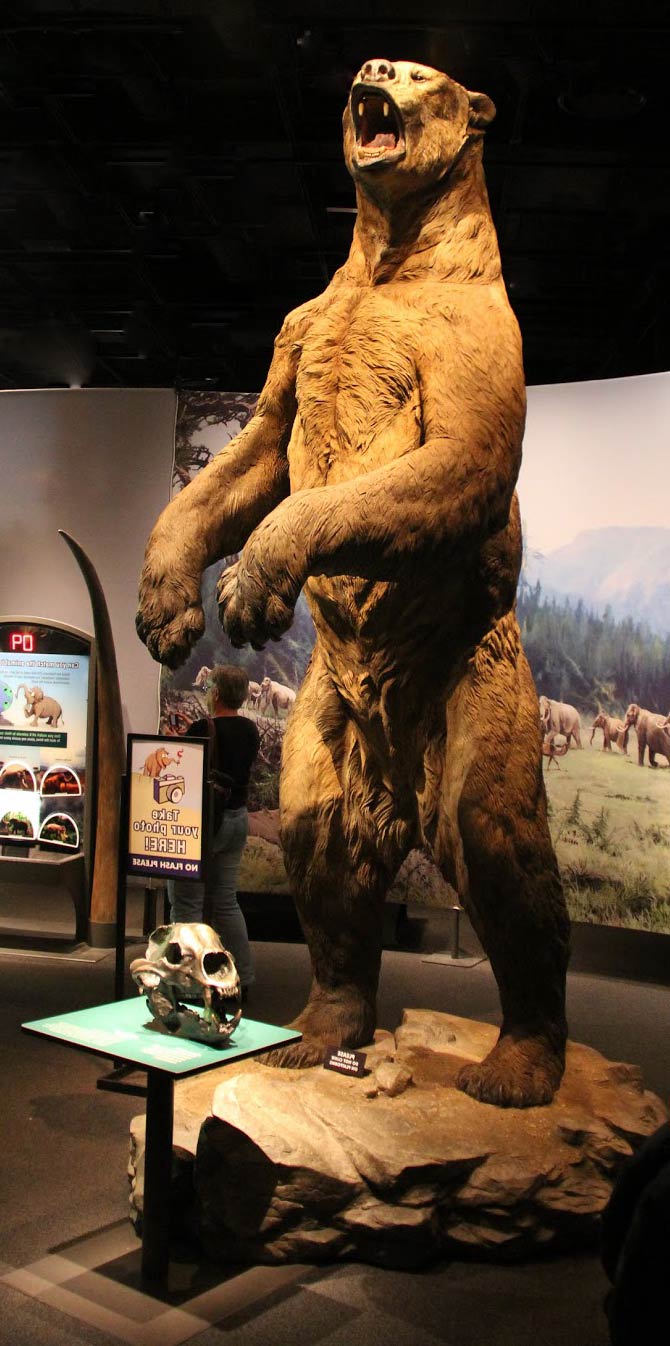
Shortfaced bear the largest bear of all time?
Arctotherium ("bear beast") is an extinct genus of the Pleistocene short-faced bears endemic to Central and South America. Arctotherium migrated from North America to South America during the Great American Interchange, following the formation of the Isthmus of Panama during the late Pliocene.The genus consists of one early giant form, A. angustidens, and several succeeding smaller species.

7 Incredible Facts About the ShortFaced Bear Wide Open Spaces
The short face bear didn't just edge out its modern relatives in size; it outclassed them with the same ease that Shakira defies her Shakira age, with a presence that exudes time-tested grandeur. They could reach, as recent findings in 2024 have uncovered, a vertical stretch of over 4.3 meters—that's like comparing a Kodiak grizzly to a.
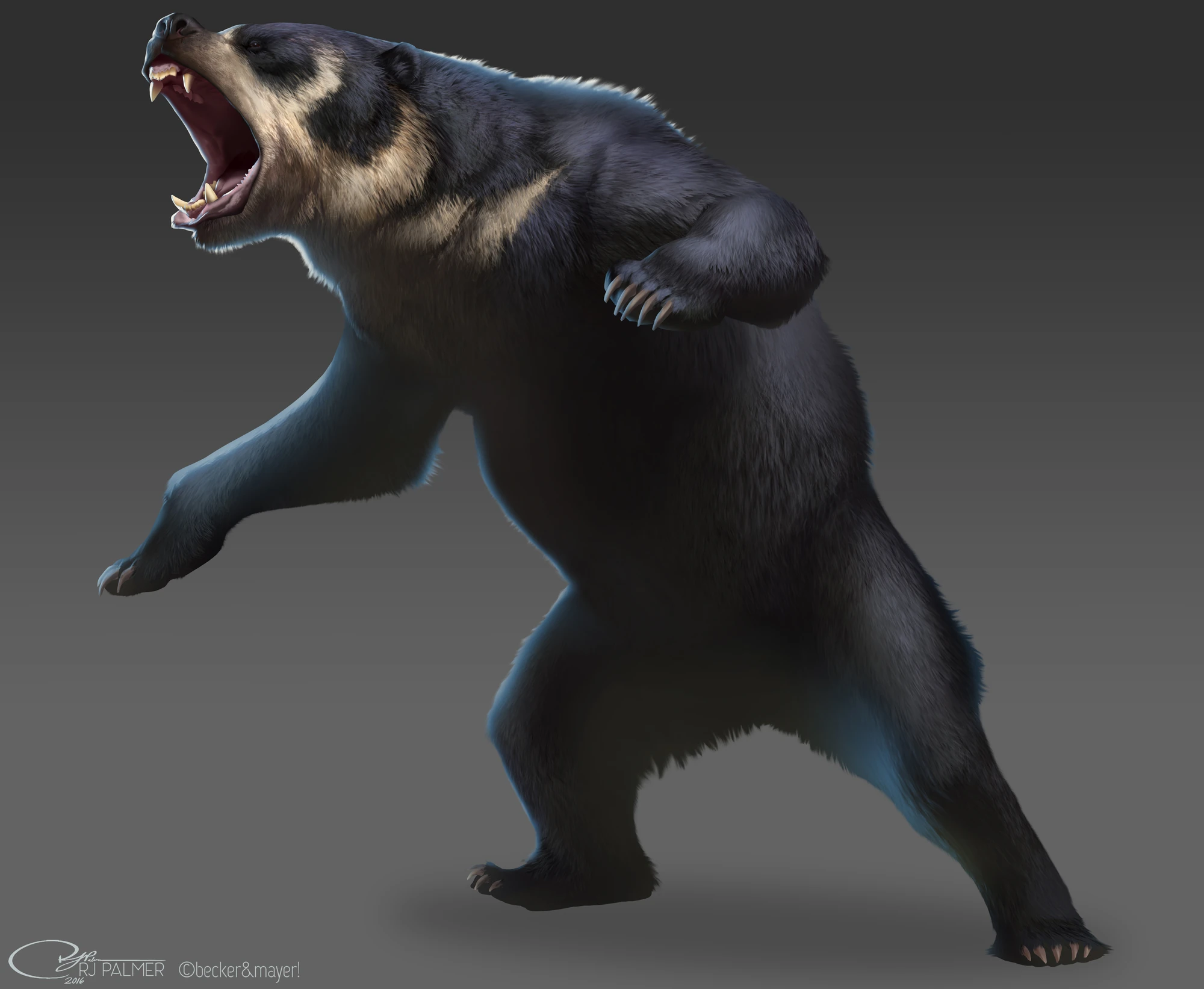
Shortfaced bear Dinopedia FANDOM powered by Wikia
The Short-Faced Bear, also known as Arctodus simus, is an extinct species that roamed the Earth thousands of years ago.
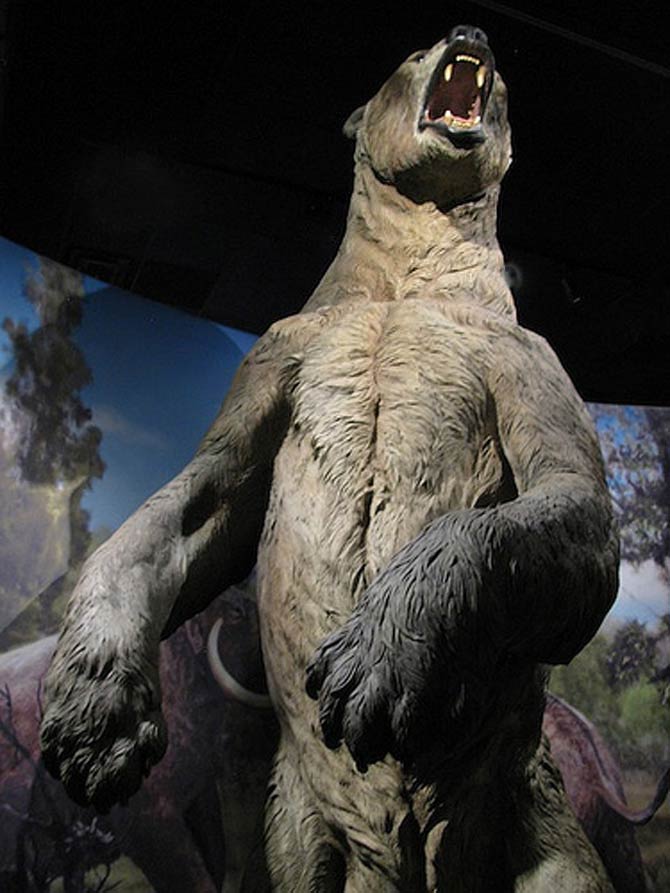
Shortfaced bear the largest bear of all time?
The Tremarctinae or short-faced bears is a subfamily of Ursidae that contains one living representative, the spectacled bear ( Tremarctos ornatus) of South America, and several extinct species from four genera: the Florida spectacled bear ( Tremarctos floridanus ), the North American giant short-faced bears Arctodus ( A. pristinus and A. simus ).

Short Faced Bear Facts, Habitat, Pictures and Diet
Genetic evidence supports the divergence of this short-faced lineage from other bears at about 10 million years ago. The first Arctodus fossils are found in Pleistocene rocks between 1.8 million and 300,000 years ago. (Hunt 1997) Arctodus, the extinct short-faced bear, and Tremarctos, the living spectacled bear, are the last of the tremarctine.

Prehistoric taxonomy Short faced bear (“Arctodus simus”) 1897 Cave
1. History's largest bear ( Arctotherium angustidens) A recreation of the ancient Arctotherium. This is quite simply, the largest bear ever discovered and by default, a contender for the.

ShortFaced Bear (Arctodus Simus) Short faced bear, Megafauna
The short-faced bear (Arctodus sp.) is an extinct bear genus that inhabited North America during the Pleistocene epoch from about 1.8 Mya until 11,000 years ago. It was the most common tremarctine bear in North America and many of its fossils have been found in the La Brea tar pits in southern California . There are two recognized species: the lesser short-faced bear (Arctodus pristinus) and.

Short Faced Bear Slideshow Video YouTube
1. Introduction. The spectacled bear (Tremarctos ornatus) is the only living member of Tremarctinae, a previously diverse group of bears endemic to the Americas.The now-extinct Pleistocene diversity of Tremarctinae comprised the Florida spectacled bear (Tremarctos floridanus), South American short-faced bears (Arctotherium—five species; []) and North American short-faced bears (Arctodus.

The Short Faced Bear HubPages
Short-faced bears belong to the Tremarctinae subfamily of bears. There is one living representative, the spectacled bear ( Tremarctos ornatus) of South America. Extinct members include Arctodus, Arctotherium, Plionarctos and the Florida spectacled bear ( Tremarctos floridanus ).

Ms. Aurelia ACC Social Studies Grade 5 Resources for Short Faced
Arctodus is an extinct genus of short-faced bear that inhabited North America during the Pleistocene (~2.5 Mya until 12,800 years ago). There are two recognized species: the lesser short-faced bear ( Arctodus pristinus) and the giant short-faced bear ( Arctodus simus ).
:max_bytes(150000):strip_icc()/arctodusWC-58b59c9c5f9b58604682bdfb.jpg)
Giant ShortFaced Bear Facts and Figures
The giant short-faced bear, Arctodus simus, was an extremely large bear that occupied much of North America throughout the Pleistocene.It is often described as the largest Pleistocene land carnivore in North America, although several new studies suggest that this member of the Carnivora family may actually have been an omnivore (Figuerido et al. 2010; Meloro 2011; Sorkin 2006).
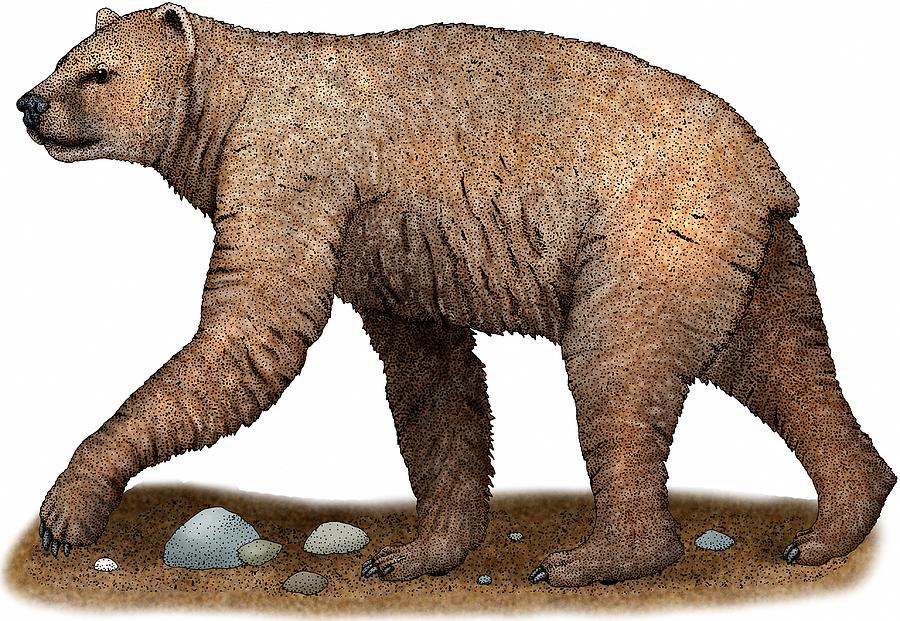
Shortfaced Bear Photograph by Roger Hall
The short-faced bear (Arctodus spp.) is an extinct bear that inhabited North America during the Pleistocene epoch from about 1.8 Mya until 11,000 years ago..
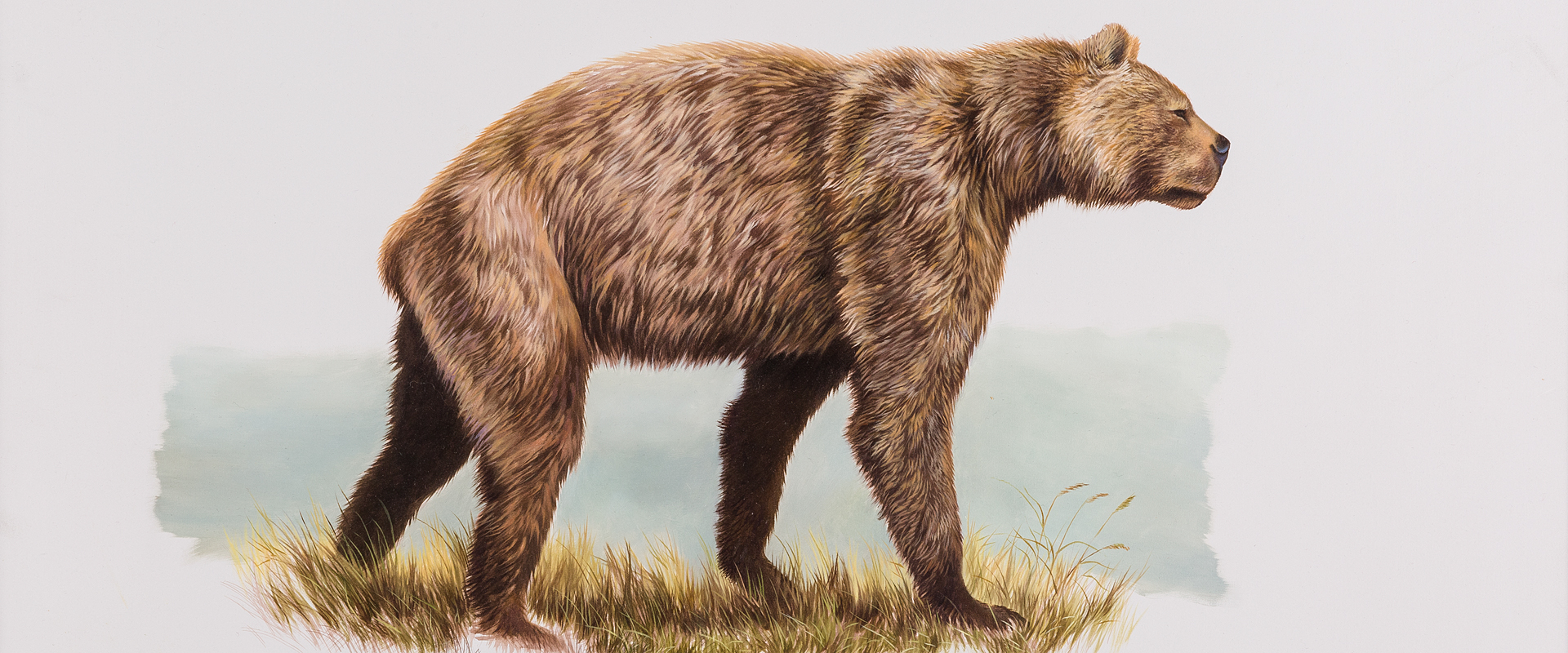
Giant Shortfaced Bear Yukon Beringia Interpretive Centre
The Giant Short-Faced Bear Arctodus simus The Fastest Running Bear That Ever Lived Also called the bulldog bear, the giant short-faced bear (Arctodus simus) was undoubtedly the fastest running bear that ever lived. Rangier… Read More » How Big Was This Short-Faced Bear? On 4 feet, he was 5½ to 6 feet at the shoulders.
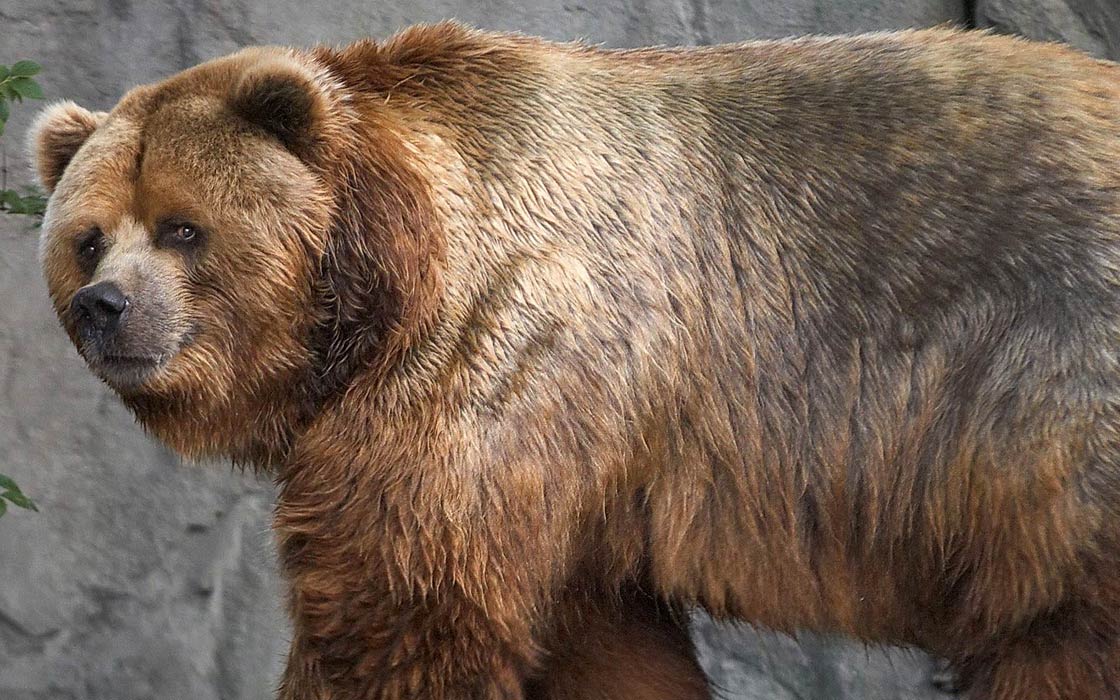
Shortfaced bear the largest bear of all time?
The Arctodus, also known as the Giant Short-Faced Bear, is a now-extinct species that once roamed North America during the Pleistocene epoch. Its fascinating characteristics and the mysteries surrounding its extinction have intrigued researchers for decades.
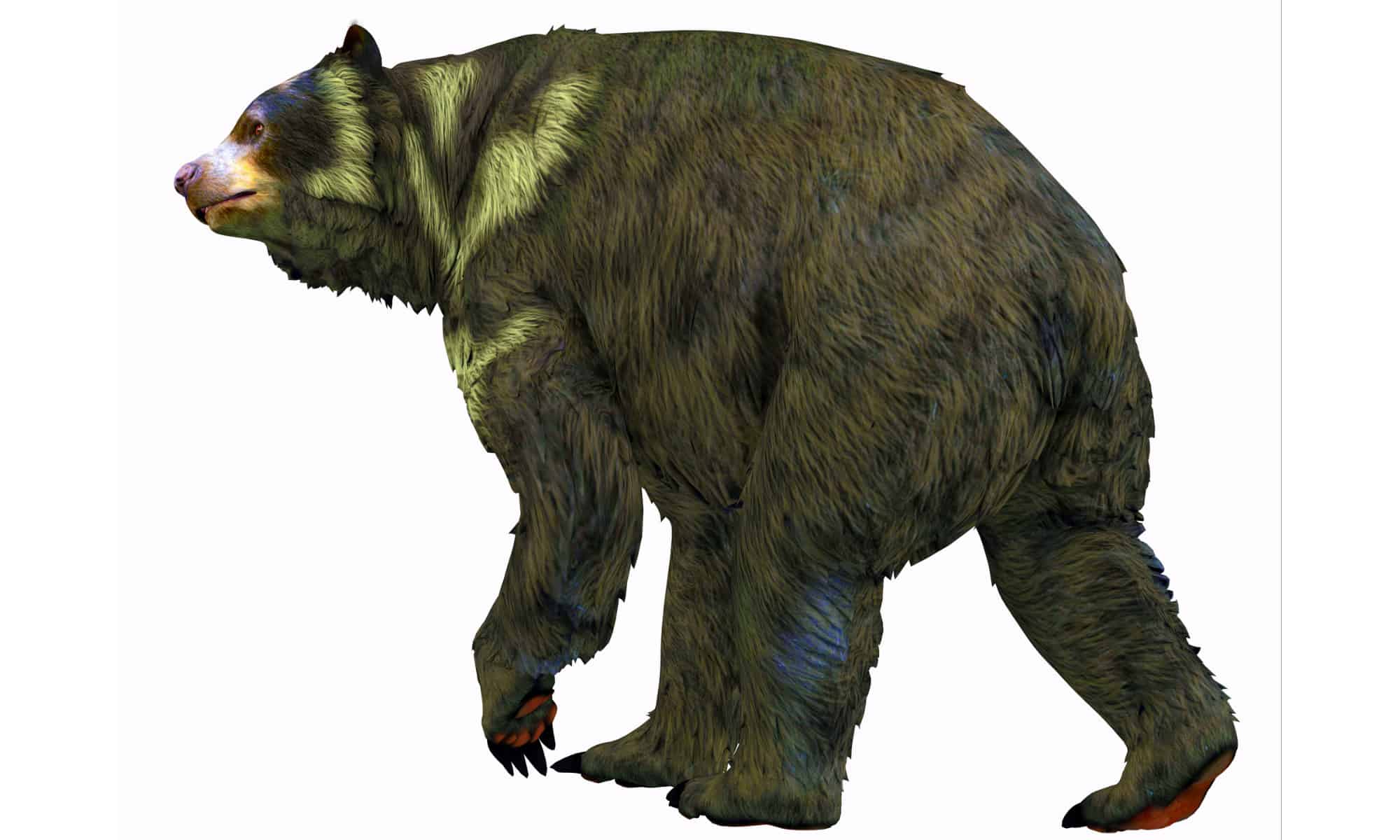
ShortFaced Bear Animal Facts Arctodus pristinus, Arctodus simus A
Giant Short-faced Bear. Ice age short-faced bears were the largest mammalian land carnivore to ever live in North America. These bears were nearly 1.5 metres high when walking normally, but stood about 3.4 metres tall when on their hind legs. They could have had a vertical reach of more than 4.3 metres. This is about one and a half times the.